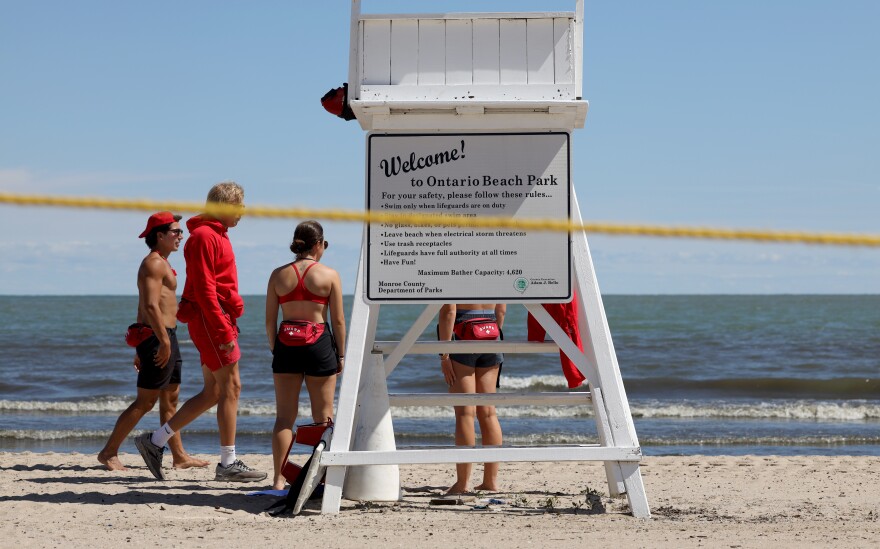A new report from the Environment New York Research & Policy Center finds that many Great Lakes beaches remain at risk for water pollution.
In 2024, 71% of the beaches tested had at least one day where bacteria levels exceeded safe swimming standards.
In Monroe County, Durand Beach recorded potentially unsafe bacteria levels on 13 out of 76 days tested. Ontario Beach had a higher rate, with 35 out of 83 test days flagged, or about 42%.
The study noted that Ontario Beach's results may be influenced by its multiple testing sites.

David Masur is the senior policy adviser for the group.
“I think we have to look at this with a multi-faceted set of solutions,” he said Tuesday, looking out at Lake Ontario from the Roger Robach Community Center. “There probably won't be a one-size-fits-all, either here at Charlotte beach or at all of Rochester’s area beaches.”
The pollution comes from several sources: sewer systems that overflow during storms, runoff from streets and parking lots, and waste from farmland. Maser said that problem will only be exacerbated by climate change, when heavy rainfall overwhelms the system.
"Now let me say swimming in poopy water is just plain gross,” Masur said. “And it causes an astonishing number of people to get sick every year in America.”
Swimming in contaminated water can cause health issues such as stomach illness, skin rashes, and infections. Nationally, the EPA estimates that 57 million people get sick each year from swimming in polluted waters.
The report calls for increased funding for sewer upgrades. Masur said green infrastructure, like rain gardens, green roofs, and permeable pavement could also reduce runoff.



